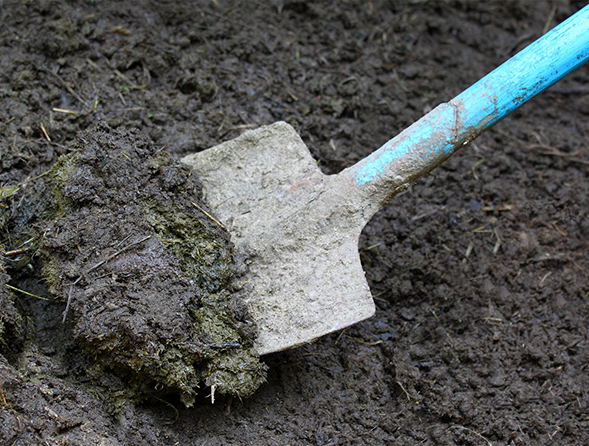THE MODERN MINT BLOG
Can your garden help reverse the effects of climate change?
It most certainly can!
Your garden can be an effective carbon sink, by using your plants and your soil to capture and store CO2.
This Chelsea Fringe 2017 project, run by fringe regulars Modern Mint, will show you the simple yet positive actions you can take to make your garden a carbon capturing eco-system.

Share With Us How You Capture Carbon In Your Garden
Please share this project with all of your gardening friends, or show us how you already capture carbon in your garden by using the #capturecarbon hashtag on social media.
We will be retweeting, liking and sharing your photos and comments throughout the Chelsea Fringe festival so that all can see how our gardens can make a positive change in the world.

You can share your carbon capturing techniques with Modern Mint in these following places:
Modern Mint Twitter
Modern Mint Pinterest
But how exactly can you do it?
How To Capture Carbon In Your Garden
1. Plant A Tree (Or Several!)
Trees pull carbon from the atmosphere, holding it in their woody stems. It is the simplest and easiest way of capturing carbon in your garden, while also providing habitats for birds and possibly a crop for you too, if you choose the right tree.
Any prunings you make when the tree gets too big can then be used to create a wildlife habitat. This is the best way to dispose of them, as burning the prunings will just release the CO2 back into the atmosphere.
2. Improve your soil
The biggest store of carbon in the world is our oceans. The second biggest? Our soils.
Capturing CO2 in your garden soil is easier than you can imagine. The first thing to do is stop digging. (That has got to be good for your back too!)
By digging your soil it is exposed to air, which in turn releases CO2 and nitrous oxide. So if you have a vegetable plot, save yourself the effort of double digging, or even turning over the soil at the end of the harvest (yes, the frost will help to break up the ‘clods’, ready for planting again next year… but the only reason you have ‘clods’ in the first place is because you created them by your digging!)
Instead of digging you can improve your soil by adding compost or other organic matter. Copy nature by placing a mulch of your own garden compost onto the soil, then let the worms do the work for you. This creates humus and builds top soil, which in the long run is better for your plants.
For more information about the benefits of no-dig vegetable gardening and the use of compost, see anything by the specialist vegetable gardener Charles Dowding.
3. Cover Your Soil With Plants
If you can’t mulch with compost to help build your soils capabilities to sequester carbon, you can at least grow something instead.
By reducing and keeping bare soil to a minimum in your garden, you get the benefit of more flowers too.

4. Don’t Use Artificial Fertiliser
Now this is an interesting one! Did you know 1 kilogram of carbon is burned just to make 1 kilo of nitrogen fertiliser.
(Even worse than that, 5 kilos of carbon are burnt to make 1 kilo of pesticide…. you can do an awful lot to lower your carbon footprint by just refraining from chemical pesticides…)
By using compost on your flowerbeds, instead of using fertiliser, you still help give your plants all that they need to grow well because it creates a soil rich in beneficial fungi, mycorrhizzas, water holding capabilities and air pockets.
Forgetting for a moment that feeding the soil is better for your plants than feeding the plants, and putting aside the vast sums of energy needed to make artificial fertiliser, why else should we stop using it in order to store carbon in our garden?
A big influx of artificial fertiliser to the soil your plants are growing in will stop the plant exchanging the carbon it has taken from the air with the nitrogen and other nutrients it needs that are available in the soil.
No exchange means the process plants rely on to grow well breaks down, your soil stops improving, you start to panic because nothing looks healthy and so resort to more and more fertiliser to improve the situation.
This downward spiral can be stopped by improving the humus content, the organic matter, in your soil – not by feeding the plant alone.
5. Use Peat Free Composts
Peat free composts have, historically, been considered a bit rubbish in the garden media.
All that has now changed!
Peat free composts can be bought from places like Dalefoot, who make their mixture from wool and bracken, or Sylvagrow.
They are recommended by Earth Friendly Gardeners across the country and the results are sublime, with many nurseries now growing all their plants in peat free compost.
By not buying or using peat-based compost, you reduce the destruction of peat bogs, a habitat that holds vast stores of carbon. These are non-replaceable stores of carbon too, because a peat bog only grows at a rate of 1mm per year.
Making your garden a place for peat free compost is a fine way to keep fossil carbon stores locked up.
These 5 simple actions can turn your garden into a carbon sink – so start today, and let us know about it!
How To Reduce Your Garden’s Carbon Footprint
A few ideas we like are:
- No petrol and oil powered tools like mowers, hedge trimmers, leaf blowers and strimmers. But it does mean you need to use sharp tools to replace them, or your life will be tough….
- Grow from seed at home, so it saves the transport cost of plants and the waste of non-recyclable plastic plant pots.
- Grow as much food as you can – herbs, fruit, vegetables and flowers for the vase will also taste and smell better when freshly picked!
- Reduce your lawn and replace it with flowers. Mulch grass clippings onto any lawn you do have.
- Don’t heat your greenhouses.
Share With Us How You Capture Carbon
This is your moment to shine!
Please do let us know, using #capturecarbon or by messaging us directly on any of the social media channels or the email address above, how you are sequestering carbon in your garden – and so doing your bit for a healthy planet during this years Chelsea Fringe Festival 2017!
Share With Your Friends & Followers How To Capture Carbon
This handy infographic is easy to download – visit this blog to view and share it as an image, then….
Post it on your blog or social media and SPREAD THE WORD!
Thank you!
Closer To The Fringe…
We will be updating with more information on how to achieve carbon capture in your garden, with extra tips from people who have joined in.
So please bookmark this page and check back often!
Or visit the topiary page for more information about my work.
Topiary, The Art Garden at The Henderson
The Art Garden at The Henderson in Hong-Kong has now opened to the public. I joined the project last March, to work with Gillespies Landscape Architects on the topiary that had been designed for the Art Garden, which gives a calm, green space below the extraordinary Henderson skyscraper designed by Zaha Hadid Architects. The garden has been designed with butterflies in mind, so lots of nectar plants, and has other art projects and installations within its footprint. The history of the site is interesting too – it was originally the first cricket ground in Hong-Kong! So still a green space….! …
ClipFest 2025
On Sunday June 22nd there will be Clipfest 2025 at Ichi-Coo Park in Surrey. It is a celebration of all things pruning and topiary, and I will be there in my capacity of teacher at the European Boxwood and Topiary Society to demonstrate tool cleaning and sharpening, and how to clip. Tickets can be found here on Eventbrite. We are hoping for great weather and to see lots of keen pruners getting their shears out and joining us at this amazing garden! And for more on topiary…
Secateur Holders
A present arrived from Norway today, from a student who visited last February to work with Chris Poole and I on learning topiary. His new hobby – a beautiful and neatly stitched secateur holder. Thrilled with this! The holder will save me keep losing my secatuers too…! Thank you Bernt! It was the same student who introduced me to the APA with whom I am doing a talk at the end of March. Tickets can be bought here for ‘Defining The Essence – Aesthetic Pruning in the Garden’. Do join the European Boxwood and Topiary Society for that!
